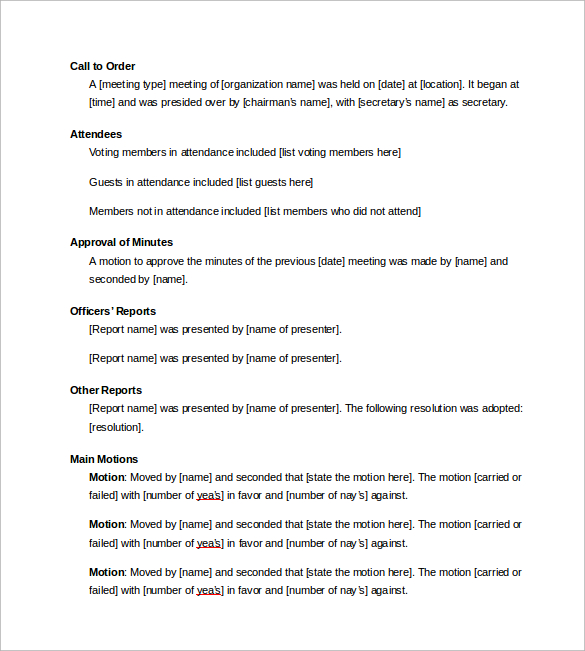
Yes, it’s hush-hush-until the group decides otherwise. Actions taken in executive session don’t always need to stay a secret. For example, maybe outside legal counsel should attend to explain what exposure the group has as a result of its treasurer’s recent mishandling of funds.ģ. Why? They might need to be present to provide context or perspective. But certain non-members could be invited to attend too. So, for an executive session of a board or committee, only members of that board or committee can attend, not every member of the organization at large. For members, attendance is limited to members of the specific group that is meeting.
For brevity the minutes of a meeting plus#
The parliamentary procedure rule for attendance at an executive session is members of the group, plus necessary staff and special guests. Non-members can attend executive session if invited. If a majority say “yes,” the group enters executive session.Ģ.


Here are the official parliamentary procedures for entering executive session: But, in general, you need the consent of more than half of the members present and voting. Rather, transitioning a business meeting from open to closed proceedings requires adoption of a motion by majority vote.Īs usual, there are a few exceptions-for example, if your group’s governing documents or parliamentary authority (e.g., Robert’s Rules) requires certain topics (think personnel or disciplinary issues) to always be discussed in secret.

Entering executive session requires a motion and a majority vote.Įxecutive session can’t happen merely on the say-so of one member, or even several. Here are a few parliamentary pointers that will help you successfully navigate private consideration of delicate issues.ġ. You probably already knew that much, but conducting a proper closed-door meeting requires knowing a bit more. “Executive session” is fancy meeting terminology for a secret proceeding.


 0 kommentar(er)
0 kommentar(er)
